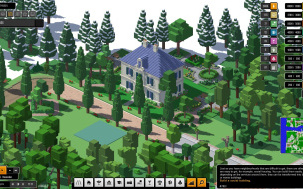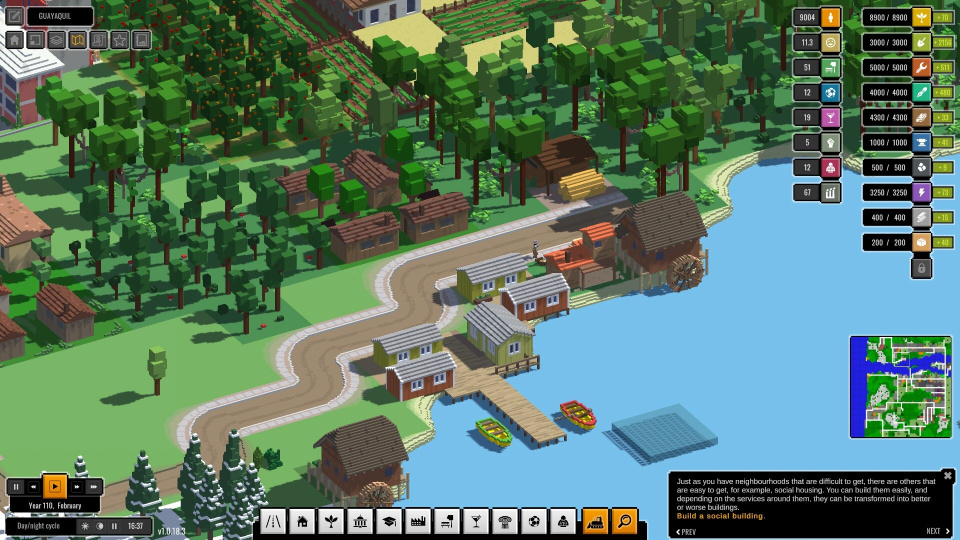Urbek City Builder – P.1 – User Article
teasers
Building games like Sim City and Cities – Skylines are rare, but the genre doesn’t stand still. The new Urbek City Builder shows that as it is more innovative and fun than the alternatives.
The release of Cities – skylines (in the short test) was a brief peak for the city-building genre, or have I missed any major releases since then? There were new genres, of course, but few really got to the core of urban design. With the Urbek City Builder it’s just a freshly released game in voxel graphics from a developer I don’t know that I would rank as the next big thing.
Urban development with modification
As in the well-known genre representatives, the game begins after a map selection in the main menu in a natural landscape. But the text of the tutorial on the bottom right prompts you to place the first buildings. If you follow this, you will immediately notice something: There is no money. Instead, resources are consumed, initially primarily labor and food. These resources replenish when you also build the appropriate production buildings. For example, if you create fields to produce more food than the production-producing houses consume every tick.
 |
| Such a villa needs parks, a 2×2 field of residential buildings, and most importantly, distance from neighbors. |
At the beginning there are only a few building options in the regular game, this changes with more inhabitants. But unlike in Skylines, nested production chains have to be created from the start. So you don’t create a balanced mix of residential, commercial and industrial areas and only build slightly more complicated production chains for this reason, but the focus is on combinations all the time. For example, farmhouses can then be built near fields, which initially only produce more food, but later also allow the planting of fruit trees and the construction of grain silos. And to generate electricity, wood ends up in burning huts, which have to be close to lumberjack huts, but need enough distance to other burning huts and also want to have residential buildings nearby for the upgrade. Of course, the lumberjack huts need trees nearby, which a residential area would quickly concrete over. When placing the individual buildings, there is a lot to consider right from the start.
Combine with depth
Because they play with the system of combination and upgrade possibilities of the buildings until the end, and that is amazingly deep. The residential buildings are not upgraded three times, but much more often. They also have different development opportunities depending on what needs have been met. A house near a bank and a school will take a different path than one near an ugly concrete square, a police station and a church.
The systems and paths are constantly intertwined: Some residential areas then need food later, which can best be distributed by a neighborhood shop, but which can only be built in the vicinity of eight fields. Later, space will also be scarce, especially the food production for the increasingly full houses takes up a lot of space (like in real life) and should be supported by more powerful production chains.
 |
| Up close, the buildings look almost bustling with their moving elements. Here the water wheel moves and occasionally boats, as well as the passing pedestrian. |
Reference-www.gamersglobal.de